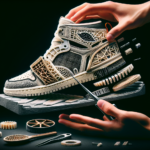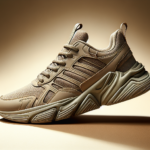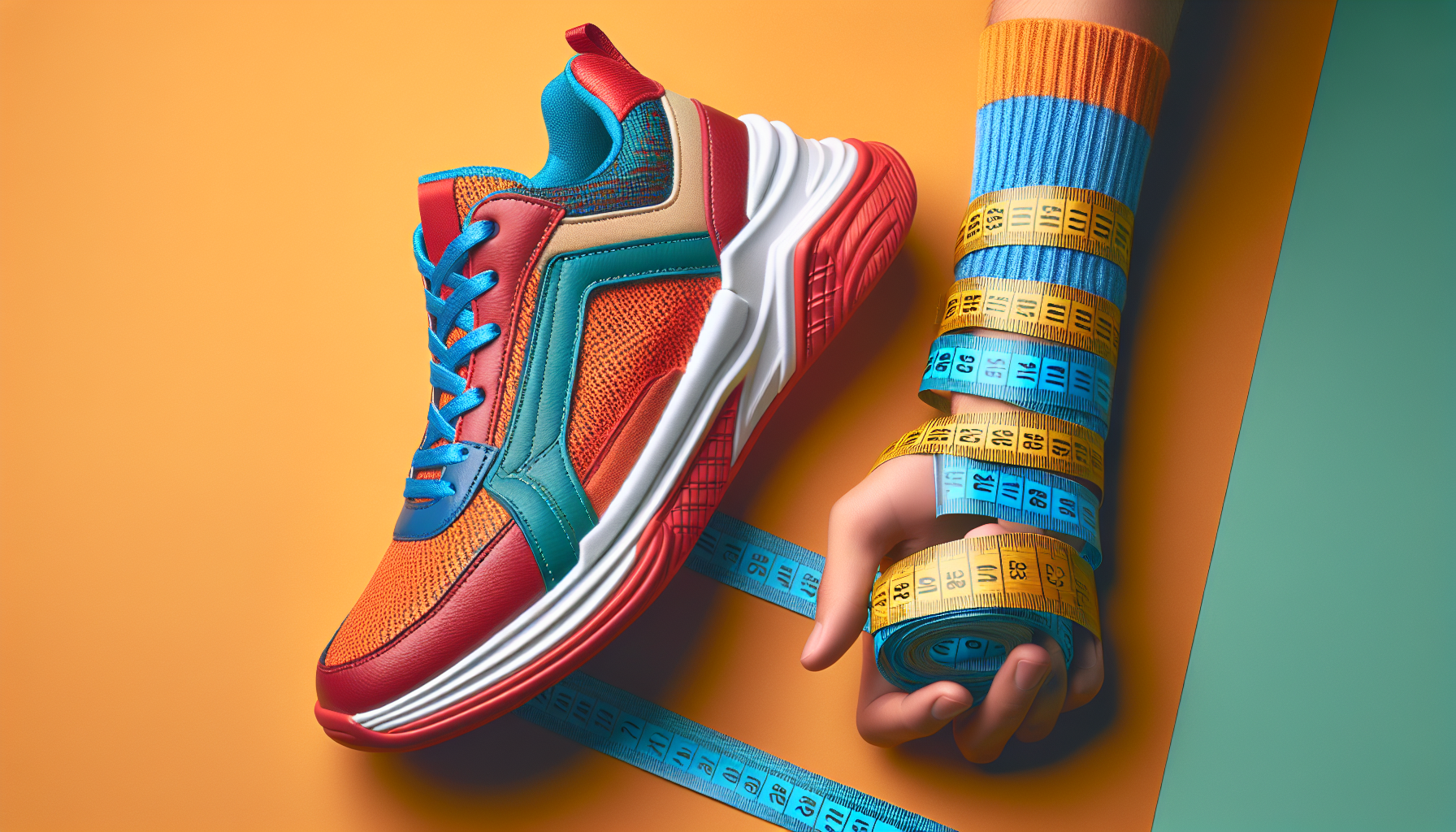Are you tired of buying sneakers that always seem to rub your feet the wrong way? Look no further! In this article, you will discover valuable tips on finding the perfect fit for top-quality sneakers. From considering the right size to understanding your foot shape and the importance of proper arch support, these tips will ensure that your next pair of sneakers is not only stylish but also incredibly comfortable. Bid farewell to blisters and discomfort and say hello to the perfect fit in your new favorite sneakers!
Understanding the Importance of Perfect Fit
Finding the perfect fit for your sneakers is not just about the way they look on your feet, but it also has a significant impact on your foot health and athletic performance. Wearing shoes that fit properly can enhance comfort, prevent blisters, and support the natural alignment of your feet.
Contribution of right fit to foot health
Wearing shoes that fit correctly is crucial for maintaining foot health. When your sneakers fit properly, they provide support to your arches, promote proper alignment of your feet, and distribute pressure evenly across your feet. This optimal support can help prevent common foot problems such as plantar fasciitis, bunions, and heel spurs.
Impact on athletic performance
The right fit is also essential for athletes as it can directly impact their performance. Ill-fitting sneakers can cause discomfort, limit your range of motion, and impact your balance. On the other hand, sneakers that fit perfectly allow your feet to move naturally, provide stability, and enhance your performance during sports or workouts.
Enhancing comfort and preventing blisters
Comfort is a top priority when it comes to sneakers, and finding the perfect fit ensures maximum comfort. Ill-fitting shoes can cause rubbing, friction, and blisters. When your sneakers fit correctly, they minimize these friction points and provide a cushioning effect, making every step more comfortable. Perfectly fitting sneakers also reduce the likelihood of calluses and corns, allowing you to enjoy your activities without any discomfort.
Identifying Your Foot Type
Understanding your foot type is the first step in finding the perfect fit for your sneakers. There are several key factors to consider when determining your foot type.
Determining foot arch type
To identify your foot arch type, you can perform a simple wet test. Wet the bottom of your feet and stand on a piece of cardboard or a dark surface. If you see a noticeable arch curve between your heel and the ball of your foot, you have a medium or high arch. If the print shows almost the entire bottom of your foot, you likely have flat feet. Knowing your foot arch type can help you choose sneakers with appropriate arch support.
Understanding foot pronation
Foot pronation refers to the natural movement of the foot as it rolls inward upon landing. Overpronation occurs when the foot rolls excessively inward, while underpronation (or supination) happens when the foot rolls outward. It’s important to identify your foot’s pronation to select sneakers with the right stability features. You can consult with a professional at a specialty shoe store or observe your foot’s wear pattern to determine your pronation type.
Considering foot width and length
Foot width and length are crucial factors in finding the perfect fit for your sneakers. Measure both the length and width of your feet to find the ideal size. Remember that different shoe brands may have variations in sizing, so it’s essential to try on different pairs and compare the fit.
Shoe Size Vs Sneaker Size
It’s important to note that sneaker sizes may differ from regular shoe sizes. Sneakers are often designed with additional room in the toe box to allow for natural foot movement during athletic activities. When purchasing sneakers, it is recommended to try them on and consider the fit rather than solely relying on your regular shoe size.
The impact of shoe design on size
The design of the shoe can influence the fit and size. Some sneakers may have a narrower or wider toe box, which can affect the overall fit. Before purchasing sneakers, it’s important to try them on and walk around to ensure they provide the right amount of space and support for your feet.
Trying on Sneakers: The Best Practices
Trying on sneakers requires attention to certain aspects to ensure you find the perfect fit. These best practices can help you make an informed decision when selecting your ideal sneakers.
The right time of the day to try sneakers
It’s recommended to try on sneakers later in the day when your feet are slightly swollen. This way, you can ensure that the sneakers will fit comfortably throughout the entire day, even when your feet are at their largest.
Wearing the right socks
When trying on sneakers, wear the socks you typically wear during the activities you plan to use the sneakers for. The thickness of the socks can affect the fit. It’s important to replicate the conditions under which you will wear the sneakers to ensure an accurate evaluation of the fit.
Tips on lace-up
When trying on sneakers, make sure to lace them up properly. Adjust the laces to achieve a snug fit, but avoid overtightening as it can restrict blood circulation and cause discomfort. Pay attention to any pressure points or areas that feel too tight, as they may indicate an ill-fitting shoe.
Understanding Sneaker Brands and Their Fits
Different brands often have variations in shoe sizes, so understanding how different sneaker brands fit can be beneficial in finding the perfect pair.
Brand-wise size variation
Each sneaker brand has its own sizing standards, and sizes may vary from brand to brand. It’s important to be aware of these differences and try on different sizes when considering sneakers from various manufacturers. Reading customer reviews or consulting with an expert can also provide insights into a brand’s sizing consistency.
Brand’s specific design considerations
Every sneaker brand has its unique design considerations, which may affect the fit. Some brands may prioritize a wider toe box for individuals with broader feet, while others may focus on providing additional arch support. Understanding a brand’s design philosophy can help you make an informed decision when selecting sneakers.
Special features offered by brands
Different sneaker brands may offer specialized features to cater to specific needs. Some brands may incorporate advanced cushioning technologies for individuals with joint issues, while others may focus on lightweight materials for enhanced performance. Understanding the special features that brands offer can help you narrow down your choices and find sneakers that suit your specific requirements.
Evaluating Sneaker Construction
The construction of sneakers plays a significant role in how they fit and perform. Considering certain aspects of sneaker construction can help you determine if they are the right fit for you.
Evaluating the sneaker material
The material of the sneaker affects its flexibility, breathability, and durability. Choose materials that provide the right amount of stretch and support for your feet. Breathable materials, such as mesh or leather uppers, can help keep your feet cool and prevent excessive sweating.
Understanding the role of the sneaker’s sole
The sole of a sneaker influences its cushioning, traction, and stability. Look for sneakers with a sole that offers adequate shock absorption to minimize the impact on your joints. The sole should provide sufficient grip to prevent slipping and offer stability during various activities.
How padding inside the sneaker can affect fit
The padding inside the sneaker contributes to its overall comfort and fit. Check for adequate padding around the heel collar and tongue to prevent rubbing and discomfort. It’s essential to ensure that the padding does not add excessive bulk or make the sneakers too tight.
Using Insoles for Better Fit
Insoles can provide additional support and improve the fit of your sneakers. Understanding the benefits of using insoles and how to choose the right size is crucial for maximizing comfort.
Benefits of using insoles
Insoles can offer various benefits, including added arch support, shock absorption, and cushioning. They can modify the fit of the sneakers, providing a more customized and comfortable experience. Insoles can also help alleviate foot pain and enhance the performance of your sneakers.
Choosing the right insole size
When selecting insoles, it’s important to choose the correct size. Most insoles can be trimmed to fit your sneakers perfectly. Follow the guidelines provided by the manufacturer to ensure a proper fit. Trying on the sneakers with the insoles in place is recommended to evaluate the overall fit and comfort.
Adjusting to insoles
It may take some time for your feet to adjust to the new insoles. Wear them gradually, allowing your feet to adapt to the added support. If you experience any discomfort or pain, consult with a professional for guidance. Insoles should enhance the fit and comfort of your sneakers, not exacerbate any existing foot issues.
Breaking In Your New Sneakers
Breaking in your new sneakers is essential to ensure they fit comfortably and do not cause discomfort or blisters. Here are some tips to break in your sneakers without hurting your feet.
Why breaking in is important
Breaking in your new sneakers allows the materials to mold and adapt to the shape of your feet. It helps soften any stiff areas and reduces the risk of blisters or discomfort when using the sneakers for extended periods. Skipping the break-in period may lead to unnecessary foot pain and potential foot problems.
How to break in your sneakers without hurting your feet
Start by wearing your new sneakers for short periods, gradually increasing the duration as your feet become accustomed to them. Wear them indoors initially to minimize the risk of excessive friction or rubbing. If you experience any discomfort, pay attention to the specific areas causing it and consider using blister pads or adjusting the lacing to alleviate the pressure.
Signs your shoes are successfully broken in
Once your sneakers are successfully broken in, they should feel comfortable and provide adequate support without causing any pain or discomfort. The materials should have loosened up slightly to accommodate your foot shape, and the sneakers should move seamlessly with your feet as you walk or run. If you reach this stage, it signals that your sneakers have been properly broken in.
Noticing and Addressing Fit Issues
Recognizing fit issues with your sneakers is crucial for maintaining foot health and preventing discomfort. Identifying common symptoms and taking appropriate measures can resolve fit issues and ensure optimal comfort.
Recognizing common symptoms of poor fit
Common symptoms of ill-fitting sneakers include discomfort, pain, blisters, calluses, and foot fatigue. If you notice any of these symptoms, it’s important to address them promptly. Pay attention to any areas of pressure, rubbing, or tightness, as they may indicate the need for a different size or style.
Seeking professional help if necessary
If you are experiencing persistent fit issues with your sneakers or have underlying foot conditions, it may be beneficial to consult with a podiatrist or footwear specialist. They can provide professional guidance, evaluate your feet, and recommend appropriate shoe styles or additional interventions to address your specific needs.
Exploring alternative lacing techniques
Sometimes, fit issues can be improved by adjusting the lacing technique. Experiment with different lacing patterns to alleviate pressure points or provide additional support in specific areas. There are various lacing techniques available that can help customize the fit of your sneakers.
Maintaining Your Sneakers for Consistent Fit
Proper maintenance of your sneakers is essential to ensure they remain in good condition and provide a consistent fit over time.
Proper cleaning and storage
Regularly clean your sneakers to remove dirt and prevent odor buildup. Follow the manufacturer’s guidelines for cleaning specific materials. Proper storage, such as keeping sneakers in a cool and dry place, can help maintain their shape and prevent excessive wear.
Replacing worn out insoles
Over time, the insoles in your sneakers can wear out, impacting their fit and performance. Replace worn-out insoles with new ones that provide adequate support and cushioning. It’s recommended to replace insoles periodically to ensure optimal comfort.
When to consider replacing your sneakers
Even with proper maintenance, sneakers will eventually wear out. Inspect your sneakers regularly for signs of significant wear, such as worn-out soles, tears in the upper material, or decreased cushioning. When any of these signs become noticeable, it’s time to consider replacing your sneakers to maintain a consistent fit and support for your feet.
Finding the perfect fit for your sneakers is a process that requires attention to detail and consideration of various factors. By understanding your foot type, trying on sneakers correctly, and paying attention to fit issues, you can ensure that your sneakers provide optimal comfort, support, and performance. With the right fit, you can enjoy your activities while maintaining the health and well-being of your feet.



















